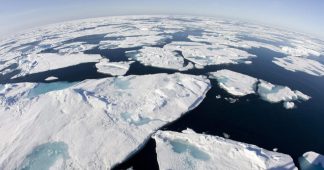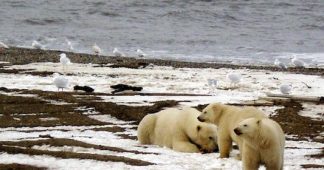By Stefan Hofer, Andrew J. Tedstone,Xavier Fettweis and Jonathan L. Bamber
Published 28 Jun 2017
Abstract
The Greenland Ice Sheet (GrIS) has been losing mass at an accelerating rate since the mid-1990s. This has been due to both increased ice discharge into the ocean and melting at the surface, with the latter being the dominant contribution. This change in state has been attributed to rising temperatures and a decrease in surface albedo. We show, using satellite data and climate model output, that the abrupt reduction in surface mass balance since about 1995 can be attributed largely to a coincident trend of decreasing summer cloud cover enhancing the melt-albedo feedback. Satellite observations show that, from 1995 to 2009, summer cloud cover decreased by 0.9 ± 0.3% per year. Model output indicates that the GrIS summer melt increases by 27 ± 13 gigatons (Gt) per percent reduction in summer cloud cover, principally because of the impact of increased shortwave radiation over the low albedo ablation zone. The observed reduction in cloud cover is strongly correlated with a state shift in the North Atlantic Oscillation promoting anticyclonic conditions in summer and suggests that the enhanced surface mass loss from the GrIS is driven by synoptic-scale changes in Arctic-wide atmospheric circulation.
Read more at http://advances.sciencemag.org/content/3/6/e1700584.full











